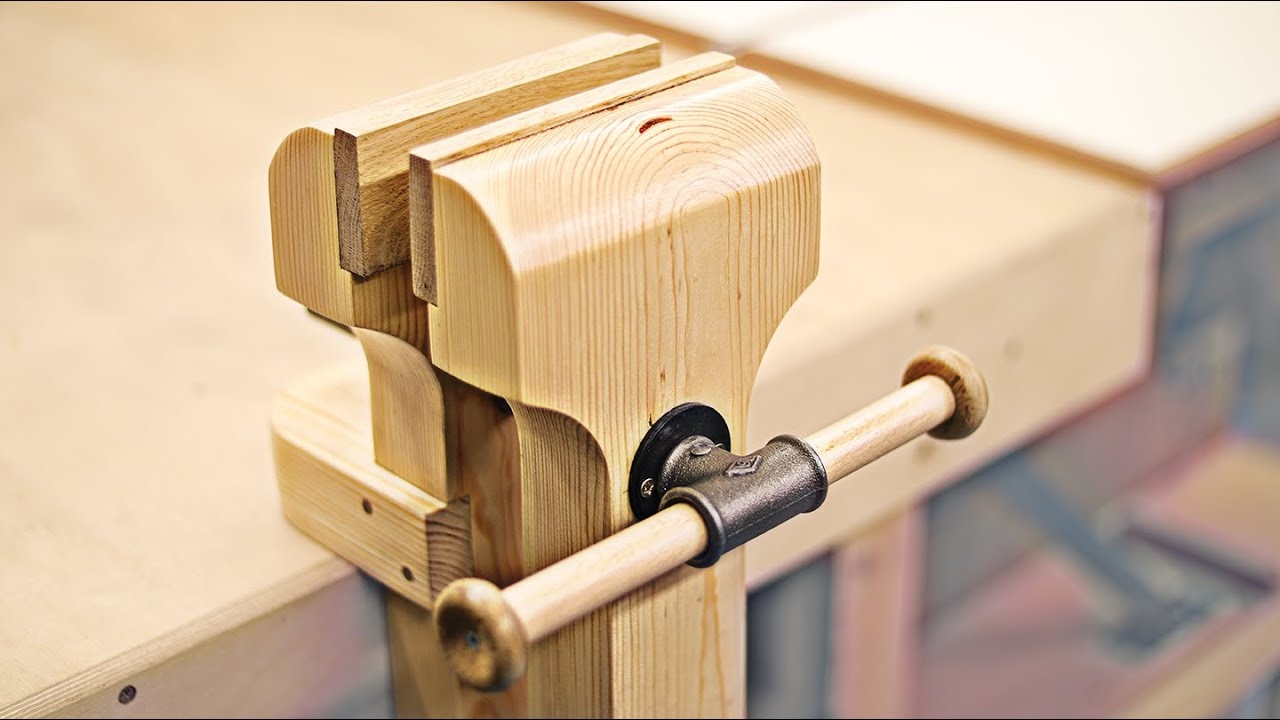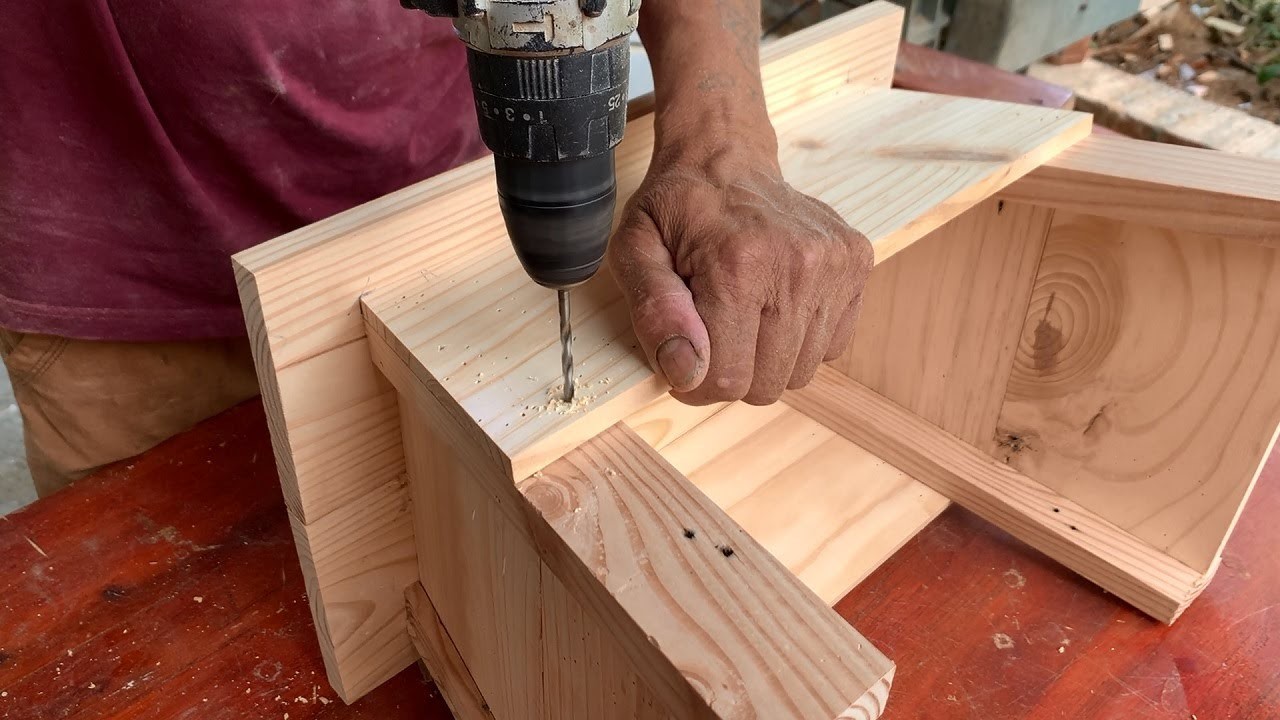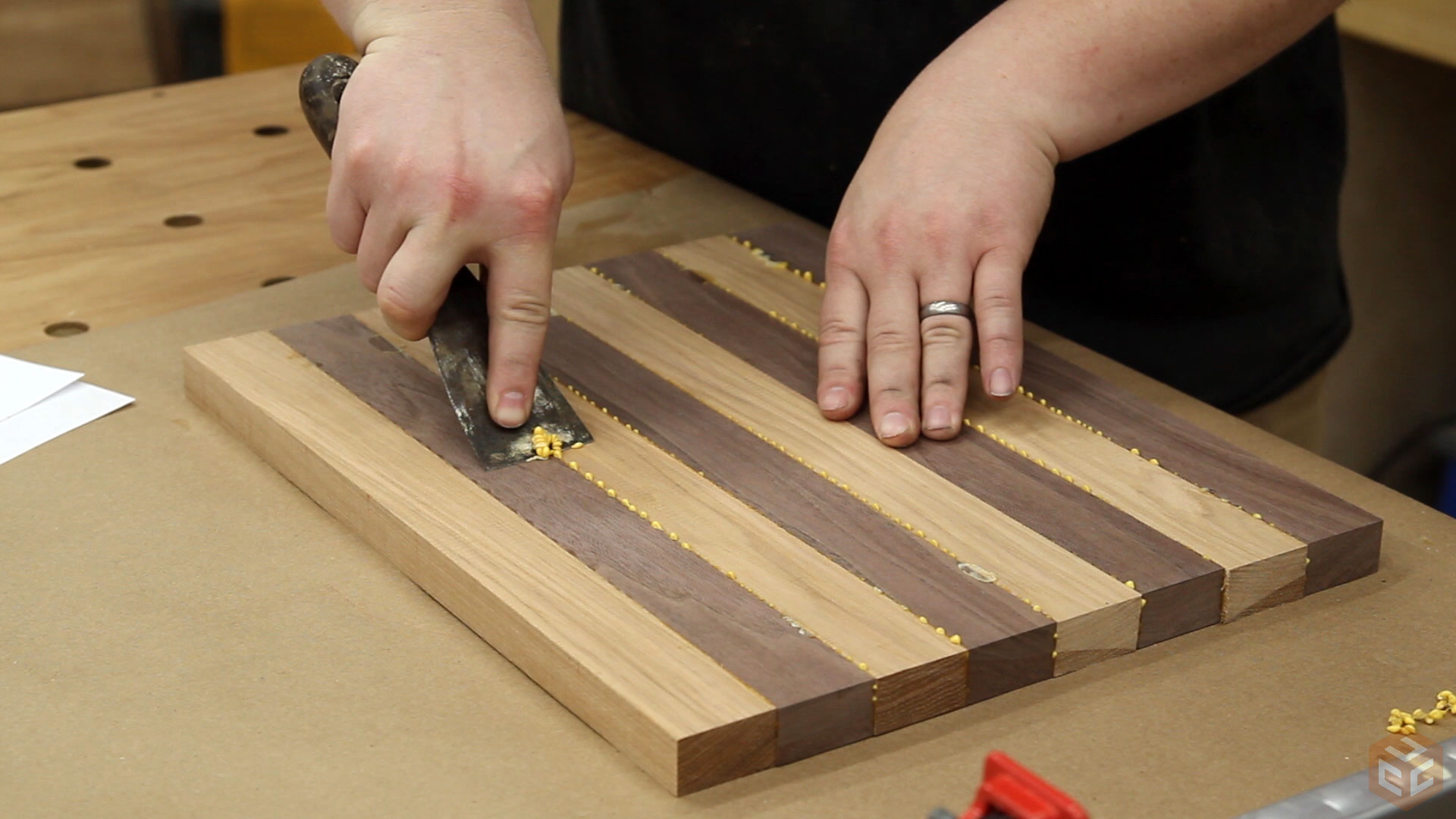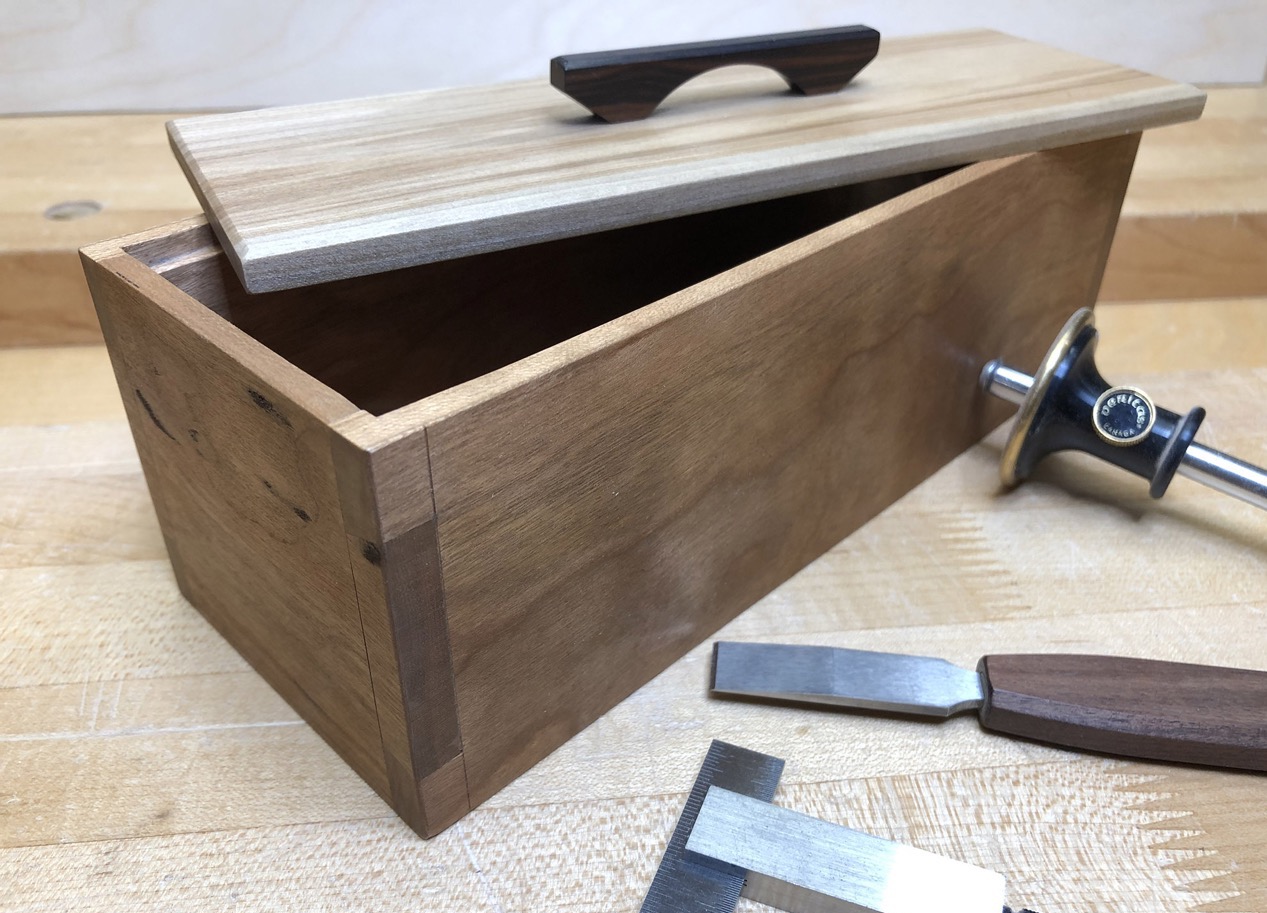

Articles
How To Make Money At Woodworking
Modified: February 10, 2024
Learn the best techniques and tips for making money with woodworking articles. Find out how to monetize your woodworking skills and turn your passion into profit.
(Many of the links in this article redirect to a specific reviewed product. Your purchase of these products through affiliate links helps to generate commission for Storables.com, at no extra cost. Learn more)
Introduction
Welcome to the exciting world of woodworking, where creativity and craftsmanship come together to create beautiful and functional pieces of art. If you have a passion for working with wood and an entrepreneurial spirit, you have the potential to turn your woodworking hobby into a profitable business.
Woodworking is a timeless craft that has been practiced for centuries, and it continues to captivate and inspire people today. Whether you are a beginner or have some experience in woodworking, there are endless opportunities to explore and monetize your skills.
In this article, we will guide you through the process of making money at woodworking. From finding your niche and setting up your woodworking workshop to marketing and selling your creations, we will cover all the essential steps to help you build a successful woodworking business.
So, let’s dive in and discover the secrets to turning your woodworking passion into a profitable venture.
Key Takeaways:
- Find your niche in woodworking by exploring different styles, incorporating your unique flair, and staying open-minded to new opportunities as you gain experience and expertise.
- Set up a well-equipped woodworking workshop, invest in essential tools, prioritize safety, and create a professional and organized space to reflect your commitment to craftsmanship.
Read more: How To Make Money In Construction
Finding Your Niche in Woodworking
Woodworking encompasses a wide range of disciplines and styles, and finding your niche is crucial to differentiate yourself in a competitive market. To identify your niche, consider your personal interests, expertise, and target audience.
Start by exploring different woodworking styles such as furniture making, cabinetry, woodturning, carving, or scroll sawing. Each style requires different skills and tools, so it’s important to choose one that resonates with you and matches your skill level.
Next, consider your target audience and their preferences. Are you targeting homeowners, art enthusiasts, or businesses? Understanding your customer base will help you tailor your woodworking projects and marketing efforts to meet their needs and desires.
Additionally, consider incorporating your own unique style or specialty into your woodworking. This could be a specific type of wood you enjoy working with or a particular design aesthetic that sets you apart. Creating a signature style can help you establish a recognizable brand in the industry.
Researching and finding inspiration from other successful woodworkers can also help you identify your niche. Study their work, learn from their techniques, and adapt them to suit your own style and vision. Drawing inspiration from others while adding your own creative twist can result in truly unique and marketable woodworking pieces.
Remember, finding your niche is an ongoing process. As you gain experience and expertise, you may discover new areas of interest or realize that your audience has specific needs that are not being met. Stay open-minded and adaptable, and be willing to pivot and explore new opportunities to keep your woodworking business fresh and relevant.
Setting Up Your Woodworking Workshop
A well-equipped and organized woodworking workshop is essential for efficiently and safely creating your woodworking projects. Here are some key considerations when setting up your woodworking workshop:
1. Space: Determine how much space you have available for your workshop. It can be a dedicated room in your home, a garage, or a separate outbuilding. Ensure you have enough space to comfortably accommodate your tools, workbench, and storage for materials.
2. Lighting: Good lighting is crucial for accurate and safe woodworking. Natural light is ideal, but if that’s not possible, invest in bright, energy-efficient LED lighting. Position your lights strategically to eliminate shadows and enhance visibility of your work area.
3. Ventilation: Woodworking involves working with tools and materials that produce dust and fumes. Proper ventilation, such as a dust collection system and exhaust fans, is important to maintain a clean and healthy working environment.
4. Workbench: A sturdy workbench is the heart of any woodworking workshop. Choose a workbench that suits your needs, whether it’s a traditional woodworking bench or a modern multi-purpose bench. Ensure it has a flat, stable surface and enough space for your projects.
5. Power Tools: Invest in high-quality power tools that are essential for woodworking, such as a table saw, miter saw, router, and drill press. Consider the specific projects you’ll be working on and acquire tools accordingly. Don’t forget about safety equipment like goggles, ear protection, and a dust mask.
6. Hand Tools: Alongside power tools, don’t overlook the importance of hand tools like chisels, hand planes, and carving tools. These tools provide precision and fine detailing in your woodworking projects.
7. Storage and Organization: Keep your workshop clutter-free and organized. Utilize storage solutions like cabinets, shelves, and pegboards to store your tools and materials. Labeling and categorizing your supplies will save time and make it easier to find what you need.
8. Safety Measures: Woodworking can be hazardous, so prioritize safety in your workshop. Have a well-stocked first aid kit, fire extinguisher, and a clear emergency exit plan. Always follow safety protocols and wear appropriate safety gear.
Remember, your woodworking workshop is a reflection of your professionalism and commitment to craftsmanship. Take the time to set it up properly, and create a space where you can work comfortably and efficiently.
Essential Tools for Woodworking
To create high-quality woodworking projects, you’ll need a variety of tools that are essential for different tasks. While the specific tools you require may vary depending on your woodworking specialization, here is a list of some of the essential tools for woodworking:
1. Hand Tools:
- Chisels: Used for carving and shaping wood.
- Hand Planes: Ideal for smoothing and flattening wood surfaces.
- Hammers and Mallets: Essential for driving nails and chisels.
- Saws: Different types of saws such as a panel saw or coping saw are used for cutting wood.
- Screwdrivers: Necessary for driving screws into wood.
- Measuring and Marking Tools: These include a tape measure, combination square, and marking gauge for precise measurements and layout.
2. Power Tools:
- Table Saw: A versatile tool for making straight cuts, crosscuts, and angled cuts in wood.
- Miter Saw: Ideal for making accurate miters and crosscuts.
- Router: Used for shaping edges, cutting joinery, and creating decorative profiles.
- Drill Press: Provides precision drilling for woodworking projects.
- Band Saw: Great for cutting intricate curves and shapes in wood.
- Random Orbital Sander: Used for sanding wood surfaces to a smooth finish.
3. Clamps and Vises:
- Bar Clamps: Essential for holding pieces of wood together during gluing and assembly.
- C-Clamps: Used for securing workpieces to a workbench or holding jigs in place.
- Bench Vise: Provides a firm grip and stability when working on smaller workpieces.
4. Safety Equipment:
- Safety Glasses: Protect your eyes from flying debris.
- Hearing Protection: Prevent hearing damage from loud power tools.
- Dust Mask: Essential for filtering out harmful dust particles during sanding or cutting.
- Protective Gloves: Offer hand protection while handling tools and materials.
- First Aid Kit: Keep a well-stocked first aid kit in your workshop for any accidents or injuries.
5. Sharpening Tools:
- Sharpening Stones or Honing Guide: Maintain the sharpness of your chisels, blades, and hand planes.
- Files and Rasps: Used for shaping and smoothing wood surfaces.
Investing in good quality tools ensures both the efficiency and longevity of your woodworking projects. Take the time to research and acquire the tools that align with your woodworking goals and budget. As you gain experience, you can expand your tool collection to meet the demands of more complex projects.
Basic Woodworking Techniques
Mastering basic woodworking techniques is essential to create high-quality and precise woodworking projects. Whether you are a beginner or have some experience, here are some fundamental woodworking techniques to get you started:
1. Measuring and Marking:
Accurate measurements are crucial in woodworking. Use a tape measure, combination square, or marking gauge to measure and mark your wood accurately before making cuts or joinery.
2. Cutting:
There are various cutting techniques in woodworking:
- Straight Cuts: Use a table saw, circular saw, or hand saw to make straight cuts across the wood grain.
- Crosscuts: For cutting wood against the grain, use a miter saw, circular saw, or handsaw with a miter box.
- Ripping: This technique involves cutting wood lengthwise with the grain. A table saw or band saw is ideal for ripping.
- Coping: Coping is a technique used for intricate cuts, such as inside corners or curved designs. A coping saw or a scroll saw is commonly used for this technique.
3. Joinery:
Joinery refers to the process of connecting wood pieces together to create sturdy and seamless joints. Some common joinery techniques include:
- Butt Joint: This is the simplest type of joint where two pieces of wood are joined at their ends.
- Miter Joint: In this joint, two pieces of wood are cut at an angle and joined to create a neat corner.
- Dovetail Joint: A dovetail joint is known for its strength and aesthetics. It involves interlocking two pieces of wood with angled cuts and pins.
- Biscuit Joint: Biscuit joinery uses small, oval-shaped wooden biscuits inserted into slots to connect two pieces of wood.
4. Sanding and Finishing:
After the main woodworking processes, sanding is crucial to achieve a smooth and polished surface. Start with coarse-grit sandpaper and gradually move to finer-grit sandpaper. Once the surface is smooth, apply a wood finish of your choice, such as varnish, stain, or paint, to protect and enhance the appearance of your project.
5. Assembly:
Once all the individual pieces of your project are prepared, it’s time for assembly. Use clamps or a combination of joinery techniques to secure the pieces together. Take your time to ensure everything is aligned correctly before using screws, nails, or glue to permanently join the parts.
Mastering these basic woodworking techniques will lay the foundation for more complex projects. Practice regularly, and with time and experience, you’ll become more proficient in each technique, allowing you to create intricate and beautifully crafted woodworking projects.
Read more: How Does Television Make Money
Creating Unique Woodworking Projects
In the world of woodworking, creativity is key to standing out and creating unique and captivating projects. While it’s important to master the basic techniques, infusing your own creativity and personal touch into your woodworking projects can make them truly one-of-a-kind. Here are some tips for creating unique woodworking projects:
1. Choose Interesting Wood Species:
Experiment with different types of wood species to add character and uniqueness to your projects. There are countless options available, each with its own color, grain pattern, and texture. Exotic woods like mahogany, walnut, or zebrawood can bring a touch of luxury, while reclaimed or salvaged wood adds a rustic and environmentally-friendly element to your designs.
2. Incorporate Mixed Media:
Don’t limit yourself to using only wood in your projects. Integrate other materials such as metal, glass, or fabric to add visual interest and enhance your unique designs. For example, metal accents on a woodworking project can create a contemporary or industrial look, while incorporating stained glass can add a vibrant and artistic element.
3. Personalize with Signatures or Initials:
Adding a signature or initials to your woodworking projects can give them a personal touch and serve as a mark of your craftsmanship. Consider using a wood burning tool or carving techniques to etch your signature onto your creations. This adds value and makes your pieces easily identifiable.
4. Experiment with Joinery Techniques:
Explore different and unconventional joinery techniques to create visually striking and unique connections between wood pieces. Incorporating intricate and eye-catching joinery, such as finger joints, dovetails, or mortise and tenon joints, can elevate your projects from ordinary to extraordinary.
5. Create Custom Designs:
Instead of following pre-existing plans or templates, challenge yourself to design your own custom woodworking projects. Let your imagination run wild and sketch out your ideas before turning them into reality. This allows you to have full creative control and ensures that each project is truly unique.
6. Personalize for Clients:
If you are creating projects for clients, engage in open communication to understand their preferences and needs. Incorporate their input into the design process to create personalized pieces that cater to their individual tastes. This adds a special touch and increases customer satisfaction.
Remember, the key to creating unique woodworking projects is to let your creativity and imagination flow. Embrace experimentation, embrace new techniques, and push the boundaries of traditional woodworking. By infusing your own personal style and creativity, you’ll be able to showcase your skills and create stunning pieces that stand out in the woodworking world.
Focus on creating high-quality, unique woodworking products that cater to a specific niche market. This will help you stand out and command higher prices for your work.
Marketing and Selling Your Woodwork
Once you’ve created beautiful woodworking pieces, it’s time to market and sell them to reach a wider audience and turn your passion into profit. Here are some effective strategies to market and sell your woodwork:
1. Develop a Brand Identity:
Create a strong and cohesive brand identity that reflects your woodworking style and values. This includes designing a logo, choosing a consistent color palette, and establishing a compelling brand story. A well-defined brand identity helps you stand out in the market and makes your woodwork easily recognizable.
2. Build an Online Presence:
Set up a professional website or an e-commerce store to showcase your woodworking projects. Include high-quality photographs, detailed descriptions, and pricing information for each piece. Engage and connect with your audience by regularly updating your website with new creations, behind-the-scenes content, and blog posts. Utilize social media platforms like Instagram, Facebook, and Pinterest to share your work and connect with potential customers.
3. Attend Craft Shows and Exhibitions:
Participate in local craft shows, trade fairs, and exhibitions to showcase your woodwork and interact directly with potential customers. These events provide an opportunity to receive immediate feedback, build connections with other artisans, and make sales on the spot. Consider offering special promotions or discounts at these events to attract more customers.
4. Collaborate with Local Businesses:
Partner with local businesses such as furniture stores, interior designers, or home decor boutiques that align with your target audience. Display your woodwork pieces for sale on consignment or rent a display space within these establishments. Collaborating with complementary businesses can help increase your exposure and access a wider customer base.
5. Offer Customization and Personalization:
Provide the option for customers to customize or personalize your woodwork pieces. This could include adding engraved initials, selecting different finishes, or customizing the size or design to suit their specific needs. Customization enhances the value of your creations and makes them more appealing to individual customers.
6. Seek Online Marketplaces:
Consider selling your woodwork on popular online marketplaces such as Etsy, Amazon Handmade, or eBay. These platforms have a vast customer base and offer a convenient way to reach potential buyers worldwide. Optimize your product listings with keywords, appealing images, and compelling product descriptions to increase visibility and attract customers.
7. Collect and Leverage Customer Reviews:
Encourage customers to leave reviews and testimonials about your woodwork. Positive reviews build credibility and trust among potential buyers. Display these reviews prominently on your website and social media platforms to showcase the positive experiences of previous customers.
As you market and sell your woodwork, remember to stay active and engaged in the community. Participate in online forums, woodworking groups, and local events to network with fellow artisans and potential customers. Building relationships and maintaining a strong online presence will help you establish yourself as a reputable woodworker and attract a loyal customer base.
Building an Online Presence for Your Woodworking Business
In today’s digital age, having a strong online presence is essential for the success of any woodworking business. It allows you to reach a wider audience, showcase your work, and connect with potential customers. Here are some effective strategies for building an online presence for your woodworking business:
1. Create a Professional Website:
Set up a professional website that showcases your woodworking projects, tells your brand story, and provides information about your services. Make sure the website is visually appealing, easy to navigate, and optimized for mobile devices. Include high-quality photographs of your work, detailed product descriptions, and information about your process and craftsmanship.
2. Start a Blog:
Consider starting a blog where you can share your knowledge, insights, and woodworking experiences. Write informative and engaging articles related to woodworking, such as tutorials, tips, and project showcases. This not only establishes you as an expert in the field but also attracts readers who are interested in your woodworking projects. Incorporate keywords relevant to your woodworking niche to improve search engine visibility.
3. Utilize Social Media:
Set up business accounts on social media platforms such as Instagram, Facebook, and Pinterest. These platforms allow you to share behind-the-scenes content, post images and videos of your woodworking projects, interact with followers, and reach a wider audience. Regularly update your social media accounts with engaging and visually appealing content to keep your followers interested and informed about your latest creations.
4. Engage with Your Audience:
Respond to comments, messages, and inquiries from your website and social media platforms in a timely and professional manner. Engage with your audience by asking questions, encouraging discussions, and acknowledging their feedback. Building a strong relationship with your followers and customers fosters loyalty and strengthens your online presence.
5. Collaborate with Influencers:
Identify influencers or bloggers in the woodworking or home improvement niche and collaborate with them to promote your woodworking business. This could involve sending them a sample of your work for review, guest posting on their blogs, or partnering for joint projects or giveaways. Leveraging their audience and credibility can significantly boost your online presence and attract new customers.
6. Invest in Search Engine Optimization (SEO):
Optimize your website and blog content for search engines to improve your visibility and organic search rankings. Research relevant keywords related to woodworking and incorporate them naturally into your website content, blog posts, and product descriptions. This helps potential customers find your woodworking business when they search for specific keywords.
7. Showcase Customer Testimonials and Reviews:
Collect and showcase testimonials and reviews from satisfied customers on your website and social media platforms. Positive feedback and word-of-mouth recommendations enhance your credibility and attract new customers. Encourage customers to leave reviews and feature them prominently on your online platforms.
Building an online presence is an ongoing process. Regularly update your website and social media accounts with fresh content, interact with your audience, and adapt your strategies based on analytics and feedback. By establishing a strong online presence, you’ll increase your visibility, reach a wider audience, and ultimately grow your woodworking business.
Providing Woodworking Services
In addition to creating and selling your own woodworking projects, offering woodworking services can be a lucrative opportunity to expand your business and cater to a wider range of customers. Here are some key considerations for providing woodworking services:
1. Custom Woodwork:
Offering custom woodworking services allows you to create unique, one-of-a-kind pieces tailored to your clients’ specific needs and preferences. Collaborate with clients to understand their vision, provide design recommendations, and deliver custom-made woodwork that exceeds their expectations. This can include anything from furniture pieces to built-in cabinetry or custom wooden accents for interior design projects.
2. Restoration and Repairs:
Many clients have old or damaged wooden furniture or antiques that require restoration and repairs. Utilize your woodworking skills to offer restoration services, which may involve stripping old finishes, repairing broken parts, and refinishing the wood to restore its original beauty and functionality. Providing reliable and expert restoration services can attract customers who value craftsmanship and want to preserve sentimental or valuable pieces.
3. Installation Services:
Consider offering installation services for your woodworking projects. This can include installing custom-built cabinets, shelves, or mantels, ensuring a precise and professional fit. Offering installation services as part of your woodworking business not only provides convenience to your customers but also helps to ensure that your craftsmanship is properly showcased in their spaces.
4. Woodworking Lessons:
If you have advanced woodworking skills and enjoy teaching others, offering woodworking lessons can be a rewarding venture. This can be done through in-person workshops, one-on-one coaching, or even online courses. Sharing your knowledge and expertise can attract aspiring woodworkers who are eager to learn and improve their skills.
5. Collaborations and Commissioned Work:
Form partnerships or collaborations with interior designers, architects, contractors, and other professionals in related industries. They may require customized or specialty woodworking pieces for their projects. By establishing relationships with professionals in these fields, you can receive commissioned work and expand your reach to clients who may not have discovered your woodworking services otherwise.
6. Excellent Customer Service:
Providing exceptional customer service is crucial when offering woodworking services. Communicate clearly with clients, actively listen to their needs, and provide regular updates on the progress of their project. Aim for timely delivery, ensure open and transparent pricing, and address any concerns or issues promptly. Going above and beyond to exceed customer expectations will not only lead to repeat business but also generate positive word-of-mouth referrals.
Remember, offering woodworking services requires a balance between your creative skills and meeting the demands and expectations of your clients. Continuously refine and improve your woodworking techniques, stay updated with industry trends, and always deliver high-quality craftsmanship and customer service to establish a reputation for excellence in your woodworking services.
Read more: How To Make Money In House Design
Maintaining and Expanding Your Woodworking Business
Once you’ve established your woodworking business, it’s important to have a strategic plan to maintain and expand your operations. Here are some tips to help you effectively manage and grow your woodworking business:
1. Quality and Consistency:
Consistently delivering high-quality woodworking projects is crucial for customer satisfaction and maintaining a positive reputation. Focus on attention to detail, use premium materials, and invest in tools and equipment that ensure precision and craftsmanship. Strive for excellence in every project to build trust and loyalty among your customers.
2. Customer Relationship Management:
Building strong relationships with your customers is vital for the success of your woodworking business. Stay in touch with your clients, respond to their inquiries and feedback promptly, and provide exceptional customer service. Consider implementing a customer relationship management system to organize customer data, track interactions, and follow up on potential leads.
3. Expand Your Network:
Network with other professionals in the woodworking industry, such as interior designers, architects, builders, and contractors. Attend industry events, trade shows, and local woodworking or craft guild meetings to meet potential collaborators and generate referrals. Establishing connections within the industry can lead to exciting opportunities and new avenues for growth.
4. Regularly Update your Portfolio:
Keep your portfolio up to date by regularly photographing and adding your latest woodworking projects. Showcase a variety of styles and craftsmanship to demonstrate your versatility and range as a woodworker. A visually appealing and comprehensive portfolio will attract potential clients and showcase your skills and expertise.
5. Stay Current with Trends:
Keep abreast of current design trends and woodworking styles to stay relevant in the market. Continuously educate yourself on new techniques, tools, and materials in the woodworking industry. Attend workshops, take courses, and subscribe to woodworking publications and online resources to stay informed and inspired.
6. Diversify Your Offerings:
Explore opportunities to diversify your woodworking business by expanding into related products or services. For example, you could offer woodworking classes, sell woodworking tools and supplies, or provide custom laser engraving services. Diversifying your offerings can attract new customers and create additional revenue streams.
7. Embrace Online Sales Channels:
Explore online sales channels such as Etsy, Amazon Handmade, or your own e-commerce store to expand your reach to a global customer base. Utilize search engine optimization (SEO) techniques to improve the visibility and search rankings of your online listings. Provide detailed product descriptions, high-quality images, and exceptional customer service to drive sales and cultivate a loyal customer base.
8. Invest in Marketing:
Allocate time and resources to marketing your woodworking business. Implement a well-rounded marketing strategy that includes online advertising, social media promotions, content marketing, and traditional marketing methods such as business cards or local print advertisements. Continuously analyze the effectiveness of your marketing efforts and make adjustments as needed.
9. Embrace Continuous Learning:
Woodworking is an ever-evolving craft, and it’s important to continuously learn and improve your skills. Attend workshops, take advanced courses, and experiment with new techniques. By constantly pushing the boundaries of your knowledge and skillset, you’ll be able to offer new and unique woodworking creations to your customers.
By implementing these strategies, you can maintain the quality of your work and expand your woodworking business. Stay focused, adapt to changing market trends, and always prioritize customer satisfaction. With passion, dedication, and strategic planning, your woodworking business can thrive and grow in the long run.
Conclusion
Congratulations on completing this comprehensive guide to making money at woodworking. We’ve explored the various aspects of turning your woodworking hobby into a profitable business venture. From finding your niche and setting up your woodworking workshop to marketing and selling your creations, we’ve covered the essential steps to help you build a successful woodworking business.
Woodworking is a craft that combines creativity and craftsmanship, allowing you to create beautiful and functional pieces of art. By finding your niche and focusing on your unique style, you can differentiate yourself in the market and attract a loyal customer base.
Setting up a well-equipped workshop with the essential tools and creating a strong online presence are important steps in establishing your woodworking business. Building a brand, showcasing your projects, and engaging with your audience online will help you reach a wider audience and increase your visibility.
Providing woodworking services such as custom projects, restoration work, or installation services can diversify your business offerings and attract additional clients. Strong customer relationships, quality workmanship, and continuous learning are key to maintaining and expanding your woodworking business.
Remember, success in woodworking requires a combination of passion, skill, and entrepreneurship. It is a journey that requires dedication and continuous improvement. Embrace creativity, stay informed about industry trends, and always strive for excellence in your work. With perseverance and a customer-centric approach, your woodworking business has the potential to thrive and bring you both financial success and personal fulfillment.
Now it’s time to take the knowledge and insights you’ve gained and apply them to your own woodworking journey. We wish you the best of luck in your endeavors and hope that this guide has been valuable in your pursuit of making money at woodworking. Happy woodworking!
Frequently Asked Questions about How To Make Money At Woodworking
Was this page helpful?
At Storables.com, we guarantee accurate and reliable information. Our content, validated by Expert Board Contributors, is crafted following stringent Editorial Policies. We're committed to providing you with well-researched, expert-backed insights for all your informational needs.














0 thoughts on “How To Make Money At Woodworking”